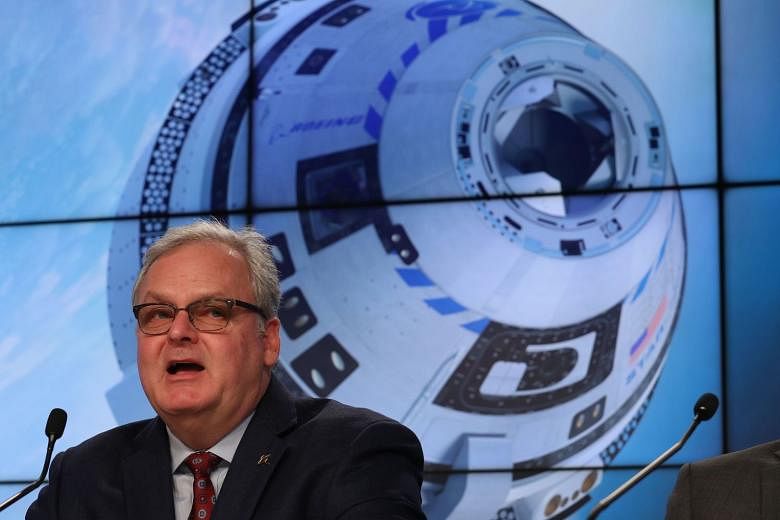WASHINGTON (REUTERS) - The Boeing Starliner spacecraft that failed to hit the right orbit to reach the International Space Station is "healthy," in a stable orbit and expected to land in New Mexico on Sunday morning, Nasa said on Saturday (Dec 21).
The Boeing CST-100 Starliner astronaut capsule was successfully launched from Florida on Friday, but an automated timer error prevented the spacecraft from attaining the correct orbit for it to rendezvous and dock with the space station.
Nasa and Boeing officials said in a Saturday conference call that they are still investigating the causes of the failure - and that the spacecraft's challenges were not over.
"Entry, descent and landing is not for the faint of heart,"said Jim Chilton, senior vice-president of Boeing's space division.
"Make no mistake, we still have something to prove here on entry tomorrow."
The Starliner's debut launch to orbit was a milestone test for Boeing, which is vying with SpaceX, the privately held rocket company of billionaire high-tech entrepreneur Elon Musk, to revive Nasa's human spaceflight capabilities.
SpaceX carried out a successful unmanned flight of its Crew Dragon capsule to the space station in March.
The Starliner setback came as Boeing, whose shares dropped 1.6 per cent on Friday, sought an engineering and public relations victory in a year punctuated by a corporate crisis over the grounding of its 737 Max jetliner following two fatal crashes of that aircraft.
The implications for any further design and testing requirements before Starliner is approved for its first crewed mission also remained unclear.
The prospect that Boeing might need to repeat an unmanned orbital test flight could substantially delay Nasa's timeline and drive up costs.
Chilton said on Saturday that the plan now is for Starliner to return to Earth early on Sunday morning at White Sands, New Mexico, about a week ahead of schedule.
The spacecraft, a cone-shaped pod with seats for seven astronauts, lifted off from Cape Canaveral before dawn Friday atop an Atlas V rocket supplied by Boeing-Lockheed Martin Corp's United Launch Alliance.
Minutes after launch, Starliner separated from the two main rocket boosters, aiming for a link-up with the space station some 409km above Earth. But difficulties ensued with thrusters designed to boost the capsule's orbit to the proper altitude.
Nasa Administrator Jim Bridenstine said on Friday that the timer error caused the capsule to burn much of its fuel too soon, preventing it from reaching the desired orbit. Nasa and Boeing tried to manually correct the automated errors, but mission control commands sent across Nasa's satellite communications network were inexplicably delayed.
Friday's test represented one of the most daunting milestones required by Nasa's Commercial Crew Programme to certify a capsule for eventual human spaceflight - a long-delayed goal set back years by development hurdles at both Boeing and SpaceX.
The US space agency awarded US$4.2 billion to Boeing and US$2.5 billion to SpaceX in 2014 to develop separate capsule systems capable of ferrying astronauts to the space station from US soil for the first time since Nasa's space shuttle programme ended in 2011. Nasa has since relied on Russian spacecraft for hitching rides to the space station.
Chilton said Friday's failure would not dissuade Boeing from sticking to its quest to win the right to provide Nasa's astronaut capsules, saying, "We're in, it's as simple as that."

